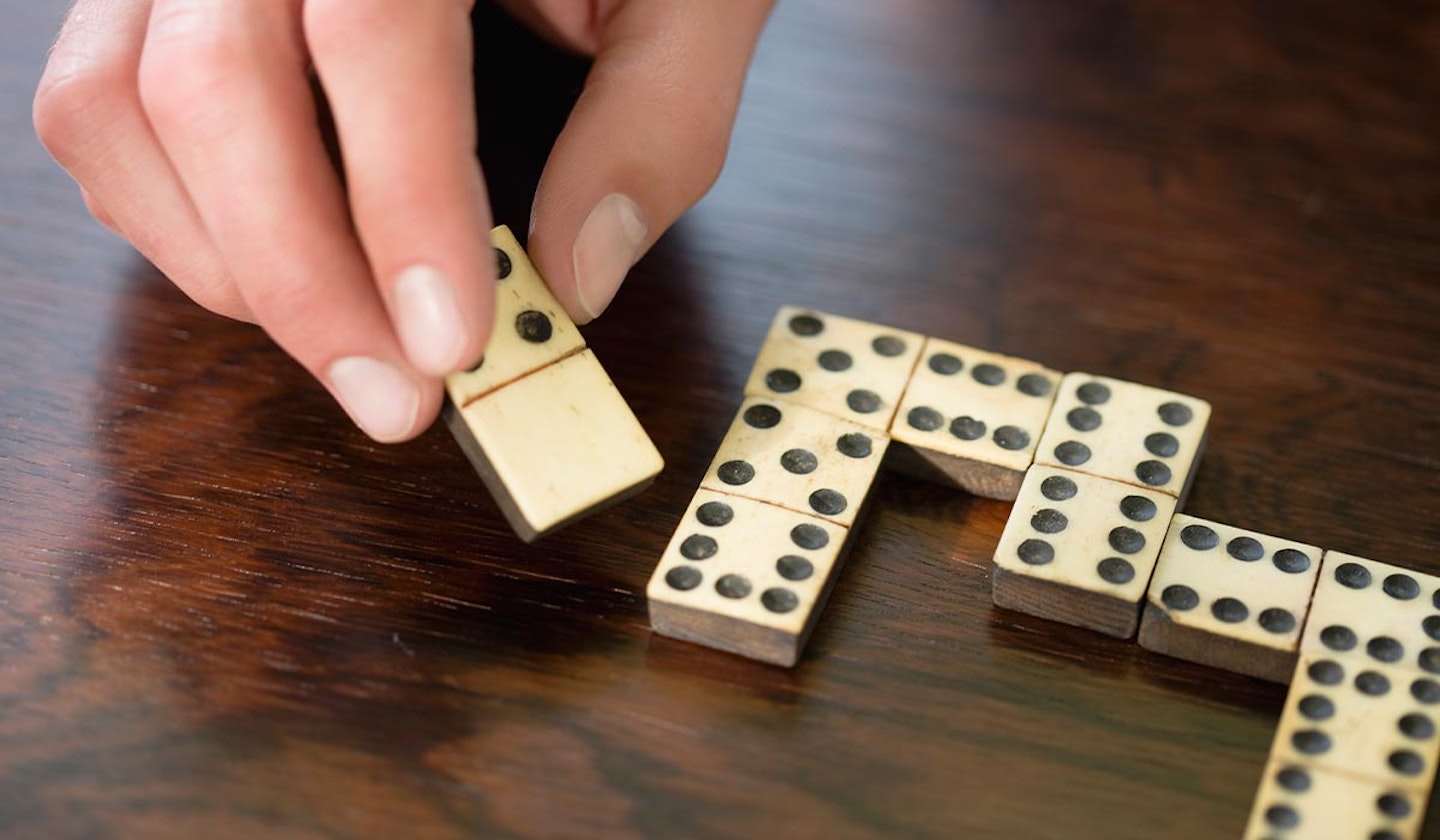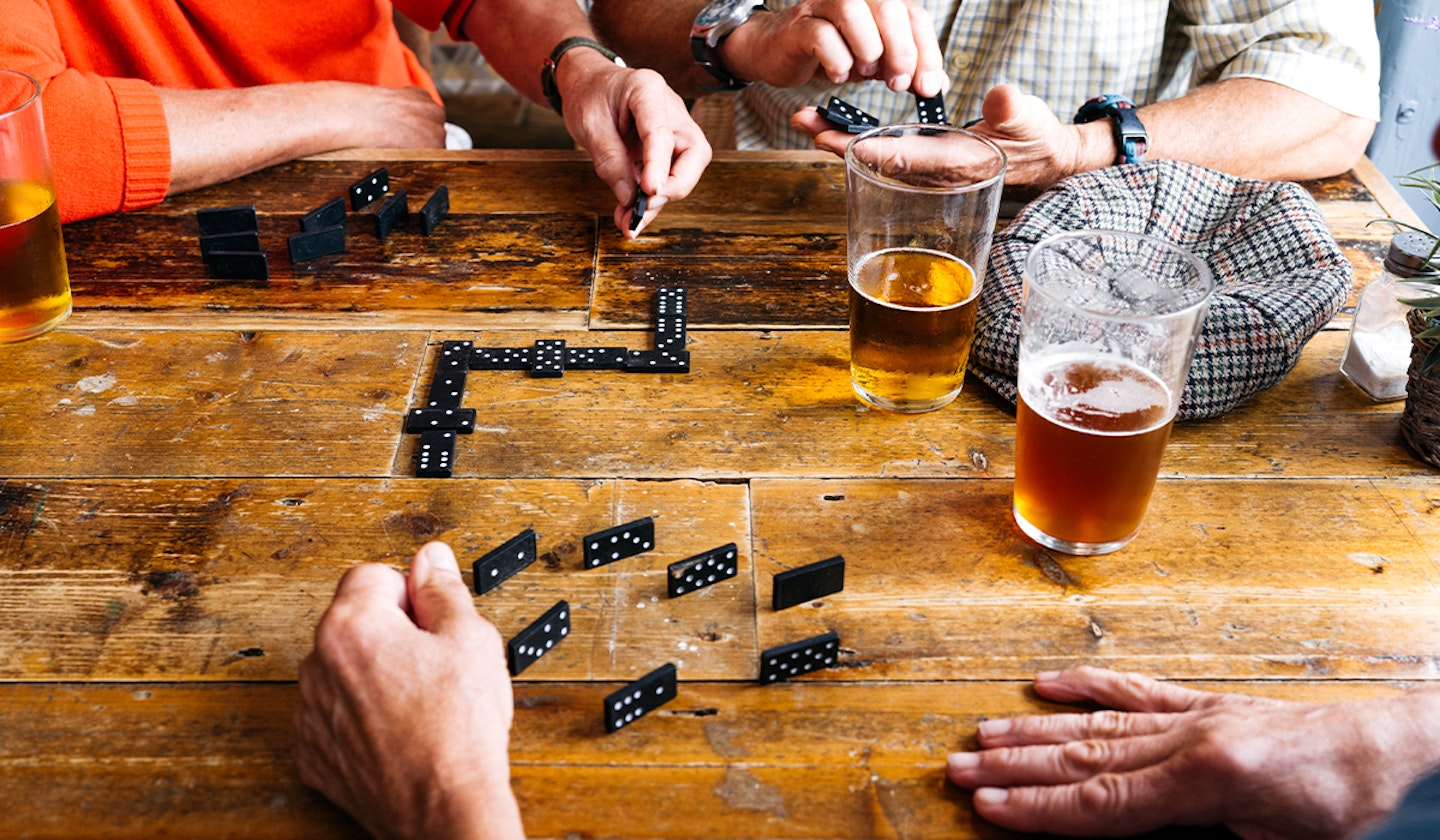Family board games have taken a huge leap in popularity over recent years, partly due to the pandemic and us having much more spare time on our hands to entertain ourselves. And whether you've been playing more games with your partner or over Zoom call with the grandchildren, there's no doubt you'll have enjoyed a game of Dominoes. While many of us know how to play dominoes, you might be surprised to know there are a number of different games you can play with dominoes.
We've all probably got a box of Dominoes lurking somewhere at the back of the cupboard or in the loft, but it might have been years since you actually played with them. Dominoes is a brilliant 2-player board game to pass the time away, and it's fairly simple to play. While it might not be as complicated as learning how to play chess, we'll be focusing on the classic UK game of dominoes, including the best strategy and tips to win.
Here are some more detailed instructions on how to play a standard game of dominoes plus some different versions of the game for you to have a go at.
How to begin your game of dominoes

Turn all your dominoes faced down and shuffle by pushing them around the table. Once shuffled, each player draws their dominoes and places them so that the other players can't see their value. It's best to play on a hard surface so that you can balance all your dominoes on the side with the value facing you. The remaining dominoes that are still faced down are termed "sleeping" tiles.
The amount of dominoes you draw depends on the amount of players in the game:
Two players - start with 8 tiles each
Three players - start with 6 tiles each
Four or five players - start with 5 tiles each
The first person to play is the person holding the double-six, or failing that the double-five and so on. The tile played first must be the double tile that allowed the player to take the first turn. If neither player holds a double, then the tiles are reshuffled and re-drawn.
How to play dominoes

Each player must in turn then play a tile, positioning it so that it touches one end of the domino chain to add more length to the chain each time. You can only play a tile which has a number showing at one end that matches one of the numbers at the end of the domino chain. If you can't play one of your dominoes, you can pick up a domino from the sleeping pile. If this domino can't be used either, add the domino to your pile and you skip your turn.
If a player plays a domino with the result that both ends of the chain show the same number, that player is said to have "stitched up" the ends.
Each tile must be placed so that the two matching ends are adjacent. Unless the tile is a double, the tile is placed square in any one of the three directions as long as the two matching sides are touching fully. Doubles are always placed cross-ways across the end of the chain. A tile played to a double must also be placed accordingly - perpendicular to the double touching at its middle.
The game ends when one player is down to their last domino. If both players get to the point where neither one can continue, the dots on their remaining tiles are counted and whichever player has the least amount of dominoes on their tiles wins.
Other variations of dominoes
The draw game
For this game, two players would start with 7 dominoes, three players with 5 tiles, four players with 4 tiles and five players with 3 tiles. It follows the same rules as block dominoes, but when a player doesn't have the right tile to move, they can pick up a sleeping tile.
Cross dominoes
This version must begin in a cross shape. That means that once the first doublet has been placed, the next dominoes have to be placed adjacent to all four sides of the tile.
Double nine cross dominoes
This game is played using domino sets with double nines. Two or three players start with seven tiles each, four or more players start with five tiles each. It begins the same as the cross dominoes and two new chains can be formed after any doublet that is placed.
About the author
Lorna White is a Senior Digital Writer at Yours.co.uk and MotherandBaby.co.uk. She was previously a writer at Yours Magazine writing features and news stories before joining the digital team. Lorna loves the great British countryside and likes to spend her spare time out and about in her home of Nottinghamshire walking her dog, Pippin.

